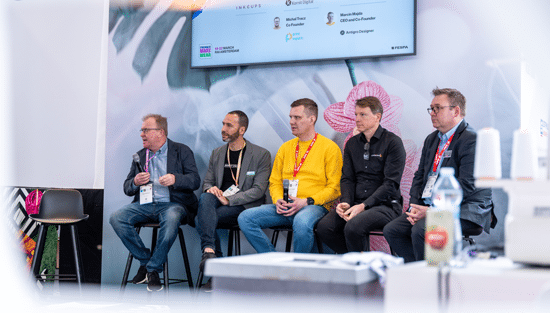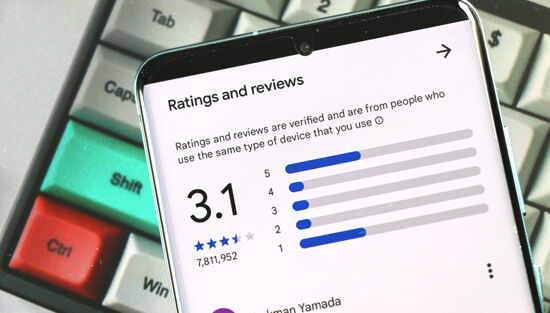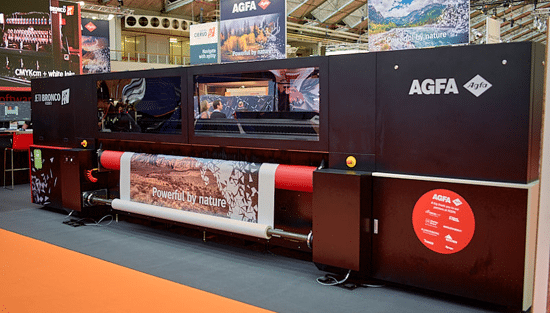Enter Gen Z: bridging the generational gap in the workplace
With more generations than ever in the workplace together, how can we blend them successfully to create a thriving business?
The future of the print industry is dependent on digital integration and specialisation. It also requires an influx of youth, a perennial problem in print. People are working longer than ever before in all industry sectors, including the print sector, and workplaces now boast a broad age range of employees, from Baby Boomers nearing retirement to Generation Z (Gen Z) just making their debut in the workforce.
This diverse mix of generations, each with their own values, experiences and work styles, offers exciting opportunities but also challenges. Will these differences cause conflict, or can the workforce find ways to collaborate and thrive? Understanding how these generations can work together and share ideas may be key to the industry’s future success.
Not generalising
It’s easy to make assumptions and generalisations about other generations. Baby Boomers might see Gen Z as entitled, disengaged or unable to put down their phone, while Gen Z may view older workers as resistant to change, too dictatorial or out of touch with modern technology.
An older worker may assume that a young person is going to be unmotivated or lazy. But it’s not that simple
But popular stereotypes oversimplify the reality. Each worker brings a unique perspective to the print shop, regardless of age. While it’s useful to identify the general characteristics that may define a generation – such as Gen Z’s permanently online life or Boomers’ strict, controlled work ethics – these labels can make us ignore the value of each person as an individual. For example, an older worker may assume that a young person is going to be unmotivated or lazy. But diversity in age and outlook (as with other characteristics: sexual orientation, race, neurodiversity and so on) working towards a shared goal can be beneficial to creativity, innovation and business success.
Generation Z has its expectations from its workplace too: the expectation of rapid and constant change, in particular. In general, they want leaders who guide by consensus, a good work-life balance and an honest, open and authentic workplace experience. They are probably better equipped to face the turbulent technological and economic rebalancing ahead than older workers and should not be dismissed or belittled by those who prioritise a nine-to-five job over agility, creativity and collaboration. Older people, those in positions of authority, must recognise that times are changing and adjust accordingly.
Barriers to a cohesive workforce
One potential barrier is communication. Older generations, accustomed to face-to-face interactions or formal email correspondence, may struggle to connect with younger workers who prefer more casual, digital methods of communication. Misunderstandings or a lack of clarity could ensue if not handled properly.
Another challenge is the fear of change. For the older generations, the tidal wave of technological advancement may seem overwhelming. But these younger generations are often eager to embrace new tools and processes. But the enthusiasm for change can sometimes clash with established codes of practice. Resistance to adopting new technology or shifting old methods can cause friction, especially if older employees feel their experience and knowledge are undervalued.
Learning from each other
The advantage is that these differences can also be a powerful source of innovation and growth. Baby Boomers and Gen X have decades of experience on the ground, having amassed a wealth of technical knowledge and business know-how. They also have established relationships with clients, suppliers and partners, necessary for maintaining strong, stable business operations.
Gen Z, on the other hand, brings a fresh, digital-first perspective. Raised in an era of rapid technological advancement, they are adept at using new tools, social media and digital marketing strategies that can help print businesses stay competitive in the modern landscape. Gen Z’s ability to think outside the box, coupled with their fluency in new technologies, can drive innovation and efficiency.
By learning from each other, the different generations – tradition and modernity – can complement each other. Older generations can teach younger workers the nuances of the print craft, the business relationships, while younger workers can help their colleagues embrace the latest digital trends. This valuable flow of knowledge has the potential to unlock more innovation and positive change.
A new kind of workplace hierarchy
For this collaboration to thrive, a shift in workplace hierarchy might be necessary. A traditional, top-down structure might not be the best way to foster the exchange of ideas between generations. Instead, a more collaborative, flexible approach could help unlock the benefits of a multigenerational workforce.
Gen Z can also benefit from collaborating with experienced workers by stepping out of their digital echo chambers
In a less hierarchical setting, younger employees may feel more comfortable contributing their ideas, while older employees could be more open to listening and adapting to new processes. In successful businesses it is common now to have “reverse” mentoring, where younger employees share technical expertise and older workers offer insights into the industry’s history and best practices and grow together. By getting to know each other, instead of approaching each other like enemies, the generations can head in the same direction.
While work styles and values may differ, most employees across generations are driven by the same fundamental goals: producing high-quality products, meeting customer expectations, and contributing to the success of the business. By aligning everyone around these core goals, businesses can unite diverse perspectives and skills towards a common purpose.
It is important to show young people respect and recognise their potential to drive innovation. They are digital natives, fluent in the tools and technologies that will be essential for the print industry’s evolution. However, Gen Z can also benefit from collaborating with experienced workers. By stepping out of their digital echo chambers and engaging with the creative, physical and technical world of print, they can flourish in the industry and gain valuable insights that can only come from experience.
Become a FESPA member to continue reading
To read more and access exclusive content on the Club FESPA portal, please contact your Local Association. If you are not a current member, please enquire here. If there is no FESPA Association in your country, you can join FESPA Direct. Once you become a FESPA member, you can gain access to the Club FESPA Portal.
Recent news

The personal touch: visit Personalisation Experience’s SmartHub Conference 2025
Join the SmartHub Conference at Personalisation Experience next month to stay ahead of the latest tech and trends.

How to build brand trust using customer reviews
Reviews can benefit or damage your business’s reputation. From spreading the word to social proof, here is why reviews matter and what you can do to manage your customer reviews to improve your brand’s reputation.

Regulation guidance: Extended Producer Responsibility
Extended Producer Responsibility (EPR) is now in effect. What does it mean for those in the print industry? Sustainability consultant Rachel England outlines everything you need to know.

How to maximise the automation of your production workflow
Workflow automation has evolved beyond basic file prep, now encompassing job submission, prepress, and postpress. Printers automate to boost productivity, cut waste, and address skill shortages. Implementing tailored automation, from RIPs to MIS, optimises throughput and profitability, minimising human intervention.